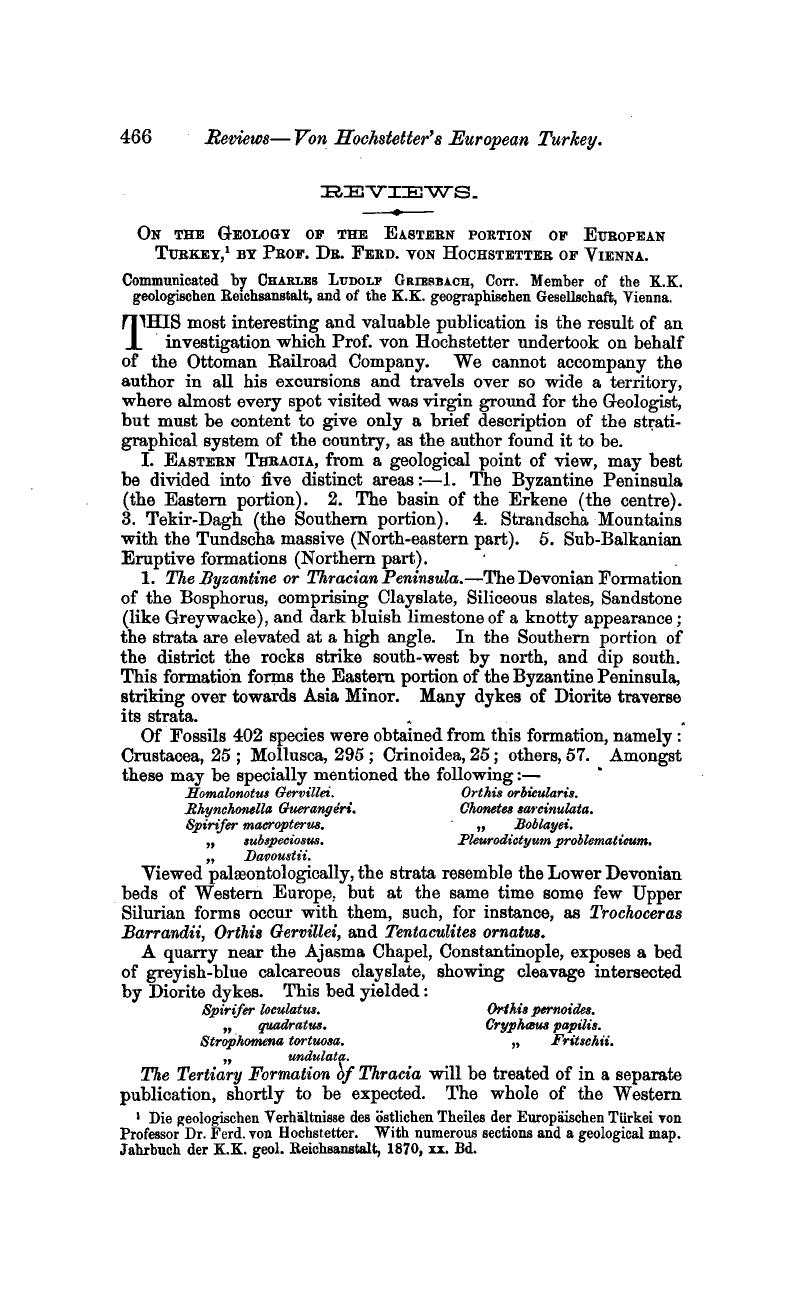No CrossRef data available.
Published online by Cambridge University Press: 01 May 2009

page 466 note 1 Die geologischen Verhältnisse des östlichen Theiles der Europäischen Türkei von Professor Dr. Ferd. von Hochstetter. With numerous sections and a geological map. Jahrbuch der K.K. geol. Reichsanstalt, 1870, xx. Bd.
page 471 note 1 It is most probable that it is this locality, near Michleskiöi, which the English Geologist, Mr. Arthur C. W. Lennox, F.G.S., mentions in a report in French (Rapport sur la Géologie d'une Partie de la Roumélie inspectée par ordre du Gouvernement Imperial Ottoman en 1866, Londres, 1867). The geological portion of this report is a real curiosity; for instance, the author talks of this coal, near Michleskioi, as “Lignites du Balkan, Nord de Muflusköi.” Still less credible seems what Mr. Lennox says of the Lias of the Tschipka-Balkan, p. 36: “C'est le Dr. E. Peters, quile premier détermina l'âge véritable du singulier dépôt de calcaire secondaire qui sepresente au nord et au sud du sommet du Col de Tschipka. Les formes caractéristiques suivantes ont été observées dans cette localité (!!) Natica macrostoma, Römer, Nerinoea Visurgis?, Römer, Pterocera, Chama, etc.” Dr. Peters was never in the Balkany, and the said fossils come from the Upper Jurassic formation of the Dobrudscha. (See Verhandl. K. K. geol. Beichsanst., 3. November, 1863.)